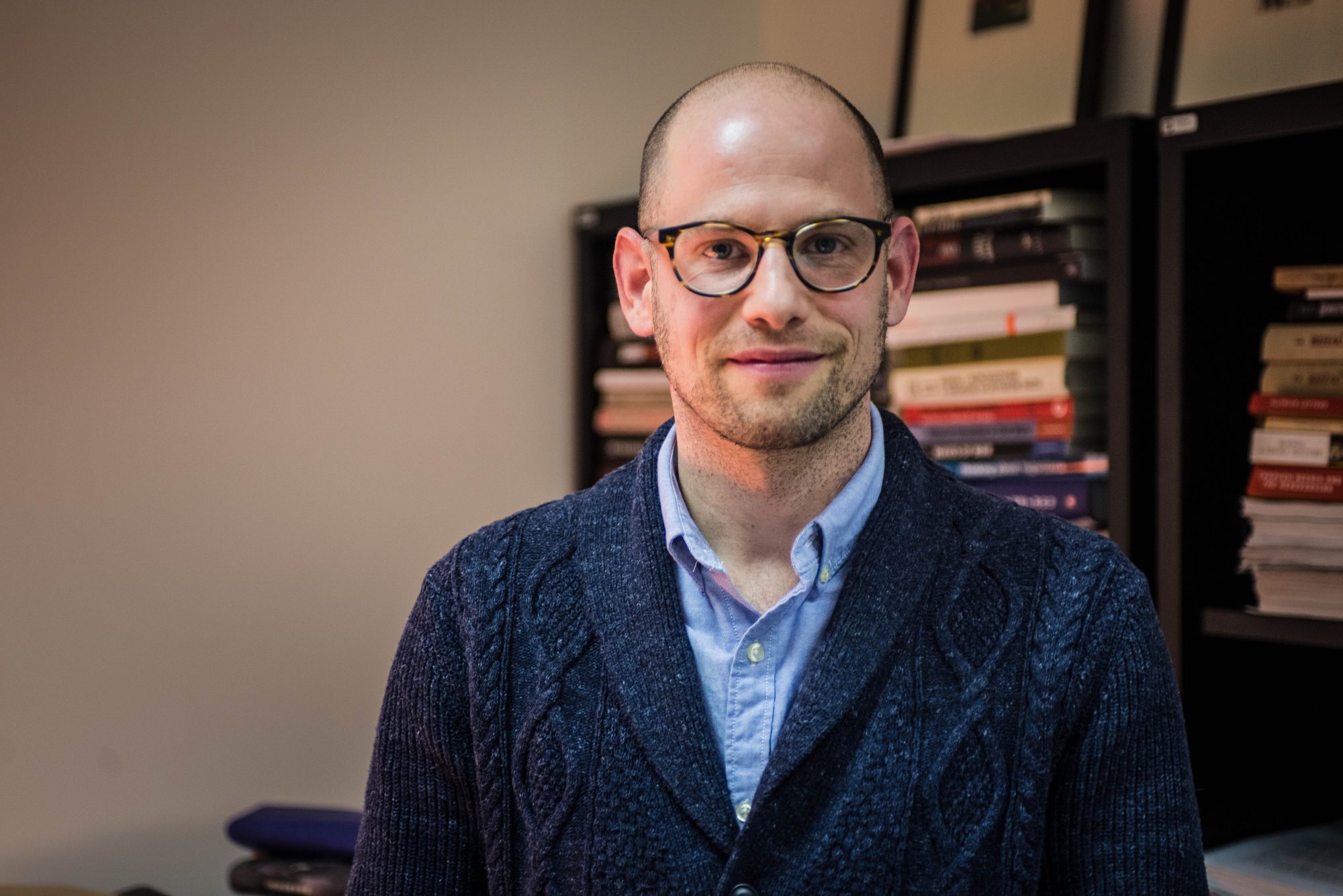How Concordia’s professor Max Bergholz uncovered a violent but obscure piece of Bosnia’s past
“You have fifteen minutes to look around. I’m going to coffee with my friends in fifteen minutes. So that’s all the time you get.” Those were the words Max Bergholz heard in an archive in Bosnia, moments before making the discovery of his career: the origin story to his award-winning book, Violence as a Generative Force: Identity, Nationalism, and Memory in a Balkan Community.
The book is set during World War II, in the small town of Kulen Vakuf, in what is now Bosnia and Herzegovina, at the border of Croatia. During two eerie nights in early September 1941, nearly 2,000 people were killed—many of them women and children—in what had been a peaceful, multiethnic, religiously diverse community up until that point. While focusing on this one incident, Max Bergholz, associate professor of history at Concordia, explains how violence itself enabled these events to unfold, especially in a town that had never seen such cruelty in nearly all of its history.
“It was, in some ways, very much by chance that I even ended up writing this book,” Bergholz said about his first book—one that has won many awards, the latest being the 2019 Laura Shannon Prize in Contemporary European Studies awarded by the University of Notre Dame.
Bergholz got involved in the project in 2006, two years into his doctoral field research in the Balkans, while enrolled at the University of Toronto. “My original subject was the memory of intercommunal violence in several local communities,” he said.
After travelling through Serbia and Croatia, Bergholz made it to Bosnia, his final destination. “I was really trying to finish everything up. My supervisors had thought I’d been doing research for too long at that point,” he added with a laugh.
This last step later revealed itself to be surprisingly conclusive—but back then, it did not feel that way. Archives in Bosnia, while not damaged, were neglected following the war that tore the country apart in the 1990s, making it difficult to get ahold of documents. Bergholz knew, however, that those relevant to his research were available—and therefore kept insisting.
“After several weeks, [the staff of the archive] realized I wasn’t leaving, and I just kept coming and annoying them every day,” Bergholz said. One day, they gave in, and he was given 15 minutes in the basement of the archive building.
“It was this weird window of opportunity—that shouldn’t really happen,” Bergholz said. Allowing researchers into storage facilities is against regulations, he explained, and those 15 minutes were all it took for him to get lucky.
That’s how the professor learned of this small town, Kulen Vakuf. The documents indicated that several thousand people had been killed by their own neighbours, amidst rising tensions between local Serb nationalists, aided by fascist forces, and local Croats and Muslims. There was no recognition of the victims. No monument was ever built. That was enough to spark Bergholz’s interest.
“There was this kind of deafening silence that has been going on for decades,” the professor said, adding that the documents were only produced in the 1980s—nearly 40 years after the events took place.
From that point onward, Bergholz embarked on a journey that would ultimately last a decade—visiting the town many times, gathering interviews and documents, writing and rewriting the book. His doctoral dissertation went from discussing many cases of violence in the Balkans, to just this one event, miraculously uncovered in a basement in rural Bosnia.
Violence as a Generative Force stems from that dissertation, though it has “transformed tremendously” from what it originally was, according to the historian. While narrowing the focus of the project and staying true to the history, Bergholz was also driven by a desire to write the most interesting story possible—which was heavily influenced by his work as a teacher at Concordia.
“I teach a class on the rise and fall of Yugoslavia and the History of the Balkans. And these are two courses that are narrative-driven,” Bergholz said. “I’m telling a story over a period of centuries, or at least a century. I do a lot of lecturing, and I always try and learn from looking at the reactions of students as I’m lecturing.”
Bergholz has found that going from broader, theoretical concepts right down to precise storytelling is what worked best both in class and when writing. Bergholz said it’s “not just talking about the political development, or economic development, but you know… What does the place look like? What does the air smell like? How does it feel to be there? How do people talk? All of these things are what, in a classroom, keep the dynamic moving, and in a book, keep the pages turning.”
Bergholz will embark on a book tour in April, promoting the Bosnian translation of the book in Serbia, Bosnia, and Croatia. “It’s a book that I’m still excited to talk about, because it took up a huge part of my life, and it’s a topic that is very close to my heart,” the professor said. “It’s a book that has changed me as a scholar, but also as a person in many ways.”
It all started with 15 minutes, right before a coffee break. “Without those fifteen minutes, this book wouldn’t exist,” Bergholz said.
Photo by Sarah Boumedda.




